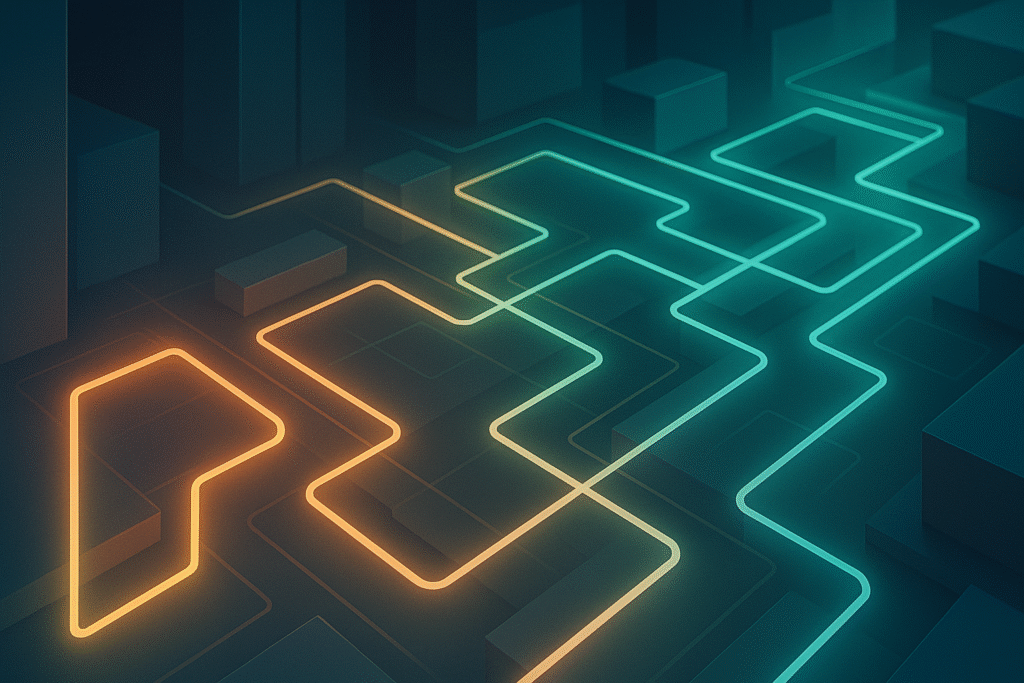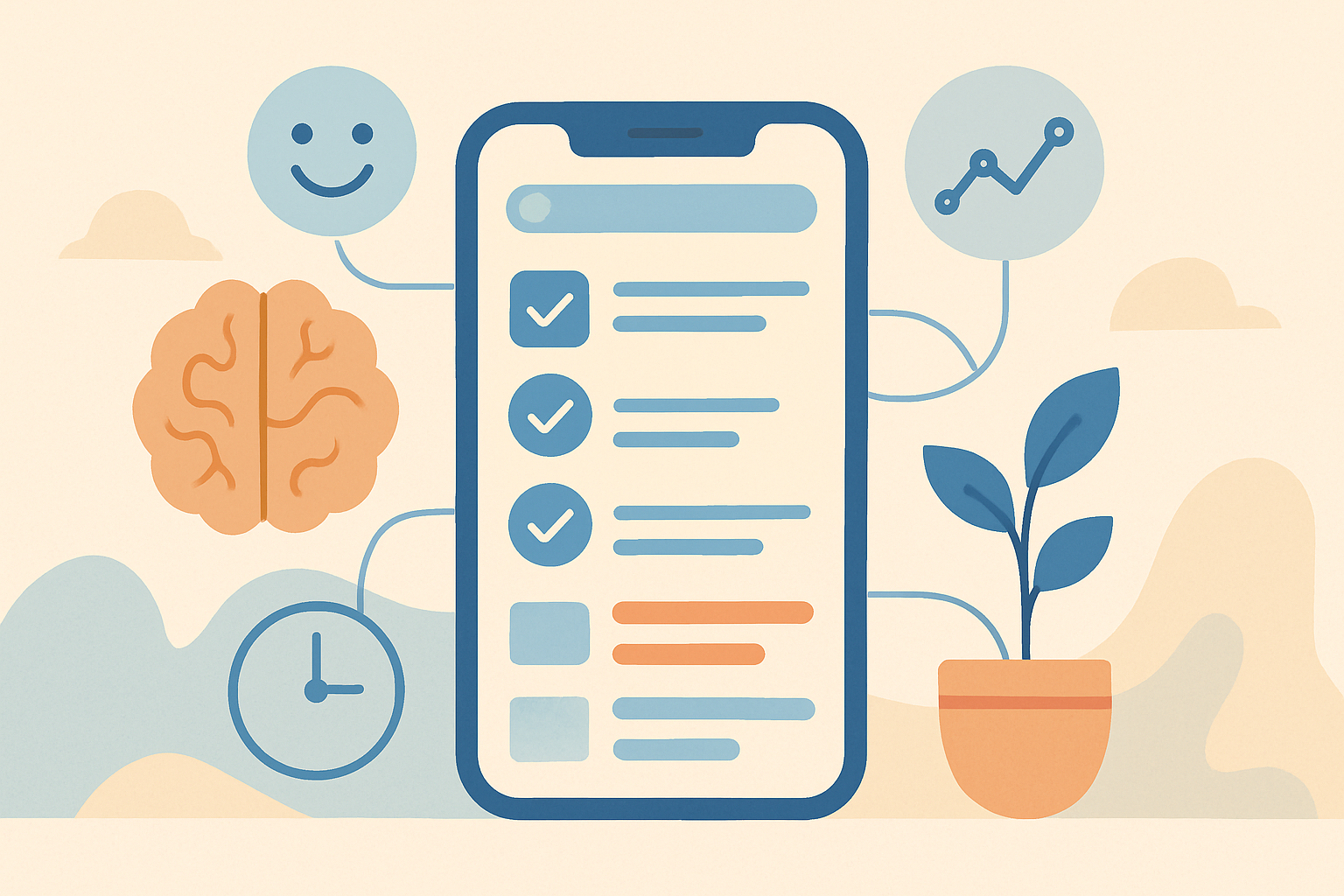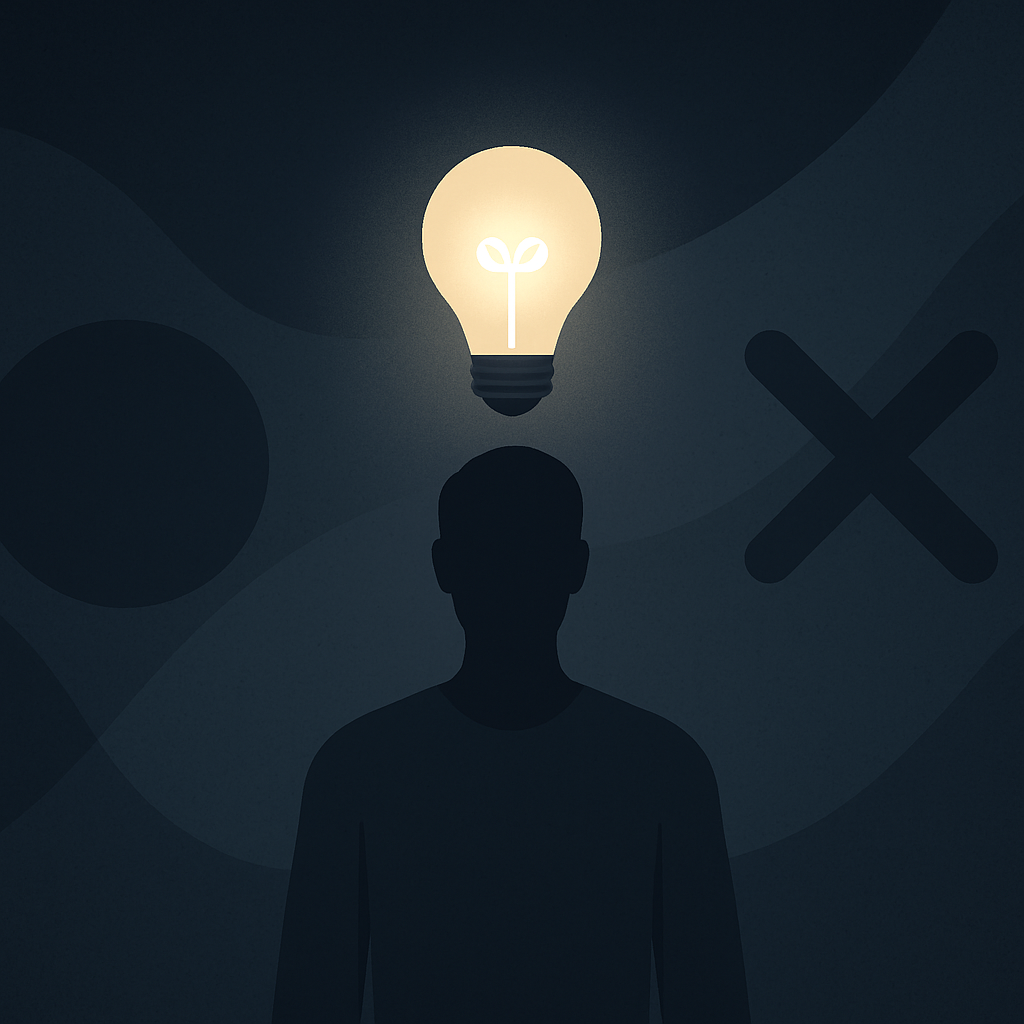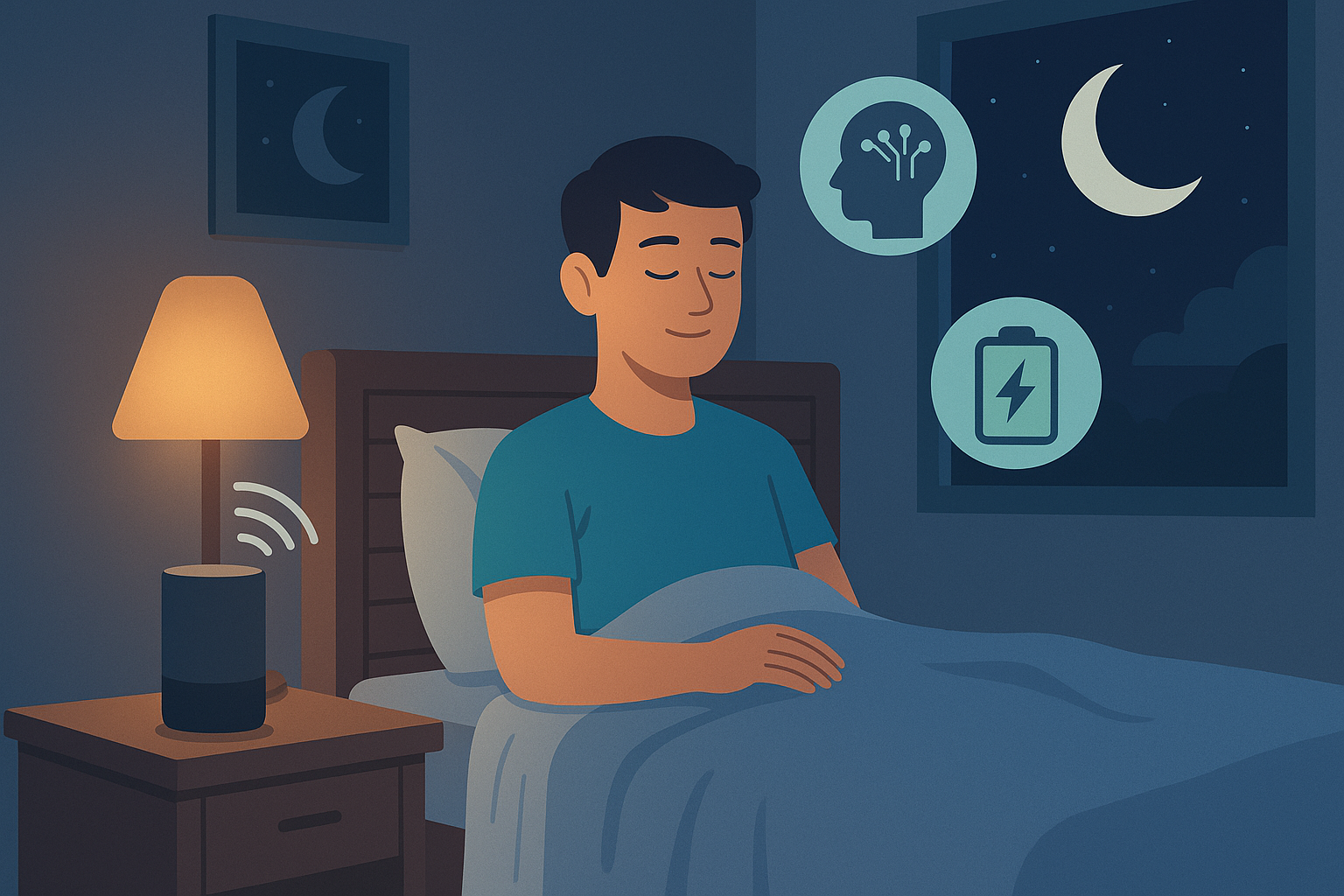AI Productivity System In a world full of noise, true productivity isn’t about doing more — it’s about designing systems that think for you.
With the rise of automation and artificial intelligence, personal organization has evolved from habit tracking to AI-driven productivity systems capable of managing your focus, schedule, and priorities automatically.
This is no longer science fiction.
An AI productivity system can now learn your behavior, anticipate your needs, and create the structure you’ve been trying to build for years — effortlessly.

Why You Need an AI Productivity System
Most people confuse productivity with discipline.
But even the most disciplined minds collapse under the constant friction of modern work: too many apps, notifications, and decisions.
An AI productivity system removes that friction.
It’s not about willpower — it’s about architecture.
The goal is to create a digital environment where everything has a place, and every action triggers a chain of intelligent responses.
Imagine starting your day and your tools already know:
- When you’re at your cognitive peak.
- What your top priorities are.
- Which distractions to block automatically.
- When to stop for mental recovery.
That’s what an AI productivity system does — it aligns technology with your natural rhythm.
The Core Pillars of an AI Productivity System
Every productivity system — manual or automated — relies on the same principles: capture, organize, prioritize, and execute.
AI enhances each one by introducing awareness and adaptation.
| Pillar | Purpose | AI Enhancement |
|---|---|---|
| Capture | Gather ideas, tasks, and inputs | AI summarizes and classifies instantly |
| Organize | Structure data for clarity | AI builds dynamic categories and reminders |
| Prioritize | Focus on what matters most | Predictive algorithms rank urgency |
| Execute | Get things done efficiently | Automation triggers and adaptive workflows |
Instead of relying on manual effort, AI turns your productivity into a living system — one that evolves as you do.
Step 1: Choose Your Core AI Productivity System Tools
Building an AI productivity system starts with choosing the right foundation.
Your goal isn’t to use every tool — it’s to make the right few work together seamlessly.
Example setup:
- Notion AI for central knowledge management and task structuring.
- Reclaim AI for time blocking and automatic schedule optimization.
- ClickUp AI or Motion for workflow execution and progress tracking.
- Zapier + AI for automation bridges between tools (email → Notion → Slack).
- Mindsera for reflection, journaling, and mental load management.
Together, they create the architecture of an intelligent workday — organized, adaptable, and free from friction.
Step 2: Map Your Daily Workflow
Before automation comes understanding.
Spend a day documenting your typical workflow — what you do, when you lose focus, and where repetition occurs.
Then, identify automation opportunities:
- What data could be captured automatically (emails, notes, deadlines)?
- What tasks repeat daily or weekly?
- Which interruptions break your flow most often?
These insights are the blueprint for your AI productivity system.
Once mapped, connect your tools through automation chains.
For example:
A new client email triggers a Notion entry → ClickUp AI creates a task → Reclaim AI schedules the work block → Mindsera adds it to your reflection log.
That’s one flow — but hundreds can emerge naturally from it.
Step 3: Build the Automation Framework
This is where AI workflow orchestration begins.
Automation bridges link your tools into one synchronized ecosystem.
Using Zapier or Make (Integromat), connect:
- Task creation → automatic scheduling.
- Meeting notes → summary → shared updates.
- Completed work → analytics reports.
The system works even while you rest.
AI doesn’t replace human focus — it preserves it by removing operational friction.
Step 4: Add Cognitive and Emotional Intelligence
The most overlooked layer of productivity is emotional context.
AI can now track mood, tone, and engagement — giving your system the ability to adapt not only to workload but to mental state.
Tools like Mindsera analyze journal entries and communication tone, identifying stress or motivation drops.
Reclaim AI detects fatigue patterns and adjusts workloads automatically.
Over time, this feedback loop transforms your workspace into a form of digital mindfulness — productivity that feels calm, not forced.
Example: The AI-Driven Day
Let’s see what a fully functional AI productivity system looks like in practice.
Morning:
You open Notion — your dashboard shows tasks already prioritized by AI.
Reclaim AI has structured your calendar based on energy prediction and upcoming deadlines.
Midday:
You start writing; Notion AI summarizes your notes while ClickUp AI logs progress automatically.
When a meeting runs over, Motion rearranges the rest of your schedule on the fly.
Evening:
Your AI journal (Mindsera) detects signs of cognitive fatigue. It suggests a lighter tomorrow and logs reflection insights into Notion.
You close the day not exhausted, but aligned.
That’s the power of building your own AI productivity system — one that works with your mind, not against it.
Table: Key Components of an AI Productivity System
| Category | AI Tool | Function | Benefit |
|---|---|---|---|
| Knowledge Base | Notion AI | Task planning, documentation | Clarity and centralization |
| Scheduling | Reclaim AI / Motion | Dynamic time blocking | Smarter focus management |
| Task Execution | ClickUp AI | Delegation and automation | Consistency |
| Integration | Zapier + AI | Cross-platform automation | Workflow connectivity |
| Reflection | Mindsera | Mental wellness and feedback | Sustainable focus |
Every tool in your system should either save time or protect focus — nothing else belongs there.
Step 5: Review, Refine, and Scale
An AI productivity system is never static.
It learns. It evolves.
As your goals shift, retrain your tools by updating priorities, integrations, and contexts.
Use analytics dashboards (available in Reclaim AI or Motion) to track where time goes — and eliminate inefficiencies.
The goal is flow, not rigidity.
Over months, your AI system becomes something greater than automation:
a living workflow that understands how you think, when you focus best, and how you recover fastest.
The Future of AI Productivity Systems
In the coming years, AI productivity systems will become more proactive and context-aware.
Instead of waiting for input, they’ll:
- Adjust schedules dynamically based on your calendar and biometric feedback.
- Draft responses in your writing style.
- Suggest creative breaks aligned with your energy patterns.
Eventually, your digital environment will operate like a co-pilot — orchestrating your day in harmony with your mind and emotions.
Productivity won’t be something you chase.
It’ll be something your system sustains for you.
Conclusion
Building an AI productivity system isn’t about downloading more apps — it’s about designing a structure that automates what drains you and amplifies what moves you forward.
The true power of AI lies not in replacing effort, but in refining intention.
When technology learns how you work, your focus becomes effortless, your results exponential, and your time — finally yours again.
Because productivity isn’t about doing everything.
It’s about doing only what matters, with a system that remembers the rest.
Further Reading & Related Insights
Internal link:
- AI Apps That Save Hours and Boost Your Output — Explore the next generation of intelligent tools for smarter, faster work.
External links:
- Reclaim AI – Smart Scheduling for Productivity
- Mindsera – Reflective AI Journaling and Focus Insights
Blog
This section provides an overview of the blog, showcasing a variety of articles, insights, and resources to inform and inspire readers.
-

AI Habit Tracking and the New Rhythm of Modern Self-Improvement
AI Habit Tracking. Progress used to depend on discipline. Now, it depends on data.…
-

AI Decision Making and the New Discipline of Intentional Living
AI Decision Making. Every “yes” has a cost. Every time you agree to something…
-

The Perfect AI Night Routine to Sleep Better and Think Smarter
AI Night Routine. Your morning doesn’t begin when you wake up — it begins…
